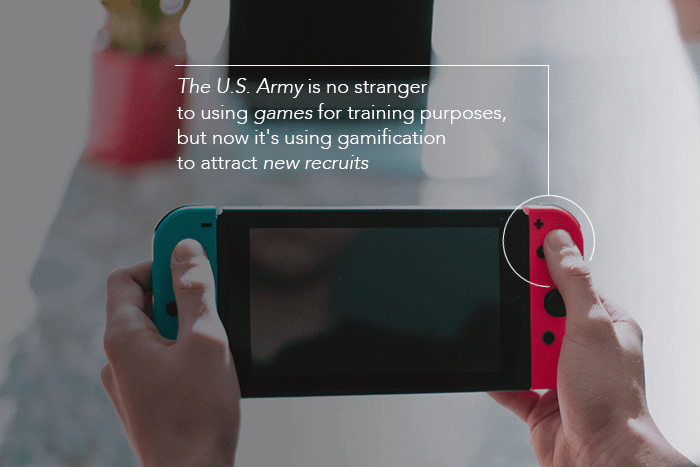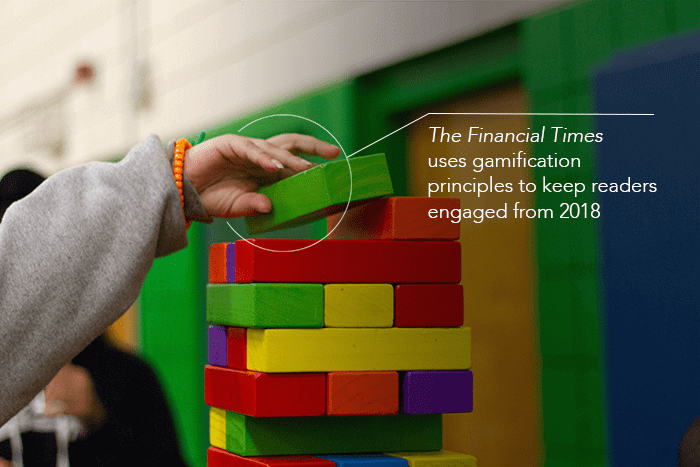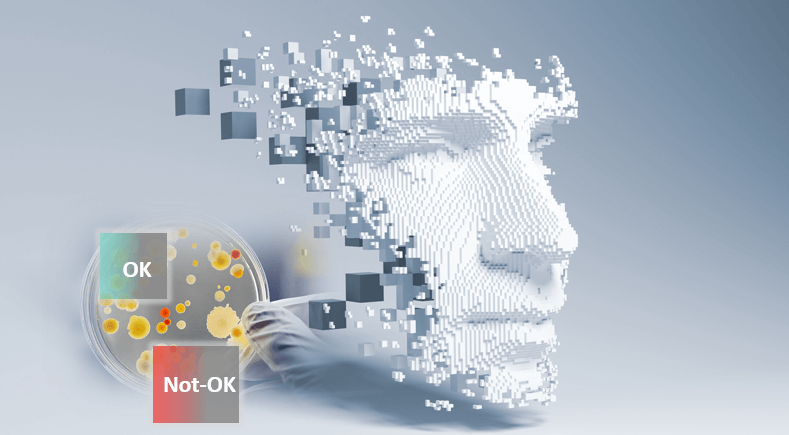The answer is obvious: gamification is a serious business, ladies and gentlemen. Big enterprises spending millions on gamification for business know there is something utterly real behind any game. Playing games, users don’t only collect coins and badges or find their names immortalized on leaderboards. No, they also make micro-payments, help companies expand their clientele, or provide businesses and institutions with priceless analytics. Just playing.
These are just some visible advantages of gamification for businesses. Those who know how to create the right games can receive anything they want from players. It’s possible to make people quit smoking, push them to regular reading, or clean a mess in the house. It’s also easy to join the army or pay half their salary for character upgrades.

Gamification is the Ultimate Tool That Can Grab Attention in the Era of the Attention Economy.
Yes, it’s the era of the attention economy. What does it mean? Customer attention has become a valuable and scarce resource. Even more, more valuable than the customer’s money and time. First, human attention is limited by default. Second, competition is growing proportionally due to the amount of distracting information.
That’s why modern companies that know how to attract and retain your attention, such as Facebook, Google, or Instagram, win the race. Gamification for business is inevitable. After all, the problem of employee engagement is one of the most popular at all the HR and IT conferences. In the modern urban environment, the number of distractors is so high it is really surprising that you and I can still complete any tasks (I got distracted five times already writing this article.) Yet some processes can grab and retain human attention naturally. They are called games. Actually, we all know about the overwhelming potential of gamification subconsciously and use it without even noticing. Think about the internal dialogue in our heads:
“OK, I will wash the dishes now, and then I can finish that series. Or I will complete the report and indulge myself with a cake.” We create rules and rewards for following them; we make up quests without noticing. It’s how we gamify our lives.
Big companies realized that game mechanics, such as levels, ratings, achievements, and quests used in everyday activities, can be extrapolated to the broader environment to reach a company’s internal and external purposes.
Benefits of Gamification in HR
Only 13% of employees worldwide are engaged in their work. All the HRs conferences and training are dedicated to answering one question: “How can we engage employees better?”
The inadequate level of engagement can be explained by two factors: the enormous amount of distractors and monotonous work. Gamified apps help to make monotonous routine operations less boring and tiring. Solves three problems for HRs: low engagement and productivity, ineffective recruitment, and inadequate training. Here are six bright cases from six mature companies that are unafraid to play games.
- PRODUCTIVITY
Increasing productivity through higher motivation and game-like daily activities is one of the most obvious benefits of gamification for small startups and big corporations. In the gamified workspace, each employee is constantly notified of the results of his/her work and can monitor colleagues’ results, improving team spirit and increasing productivity.
Several years ago, a popular social media platform with 330 million users implemented gamification for business into the working process to improve the degree of bug fixing. They created a custom game called Bugatlon. First, they made the team believe that bugs were real problems for millions of users, adding an emotional aspect to the game. Second, they created several skills like Java Web and GWT for each employee. After completing quests QAs and developers achieved points, and at the end of each day, managers congratulated the best employees.
Using gamification, the social network managed to reshape the perception of bug fixing and significantly increase the effectiveness of bug fixing. In the first five days of Bugatlon, employees fixed 50% of all the bugs. Some QA and developers even played at home during weekends to increase their ratings. And I don’t even mention gamification for sales teams: there are huge possibilities to make a sales process extremely effective.
- EDUCATION & TRAINING
Using gamification mechanics for employees’ education and training. Skill trees with different skills for professionals with milestones inside the trees with integrated approvals or tests – the possibilities are unlimited. Sometimes the education/ training of new employees is so ineffective that companies avoid hiring new people.
SAP created a special gamification system for their sales team called Roadwarrior. Inside this game, sales managers enter the competition in which they try to become the best product experts. The game simulates typical sales situations and creates a healthy rivalry between teams. That’s why gamification for the sales team works like a magic potion for witches.
- RECRUITMENT
Optimization of the effectiveness of the recruitment process. Gamification becomes a vital tool for HR departments in hiring and evaluating employees by creating tricky or non-standard situations for potential candidates. Using gamification helps HRs gather more accurate information about potential employees.
At some point, the US Army realized they needed to design a new recruitment tool to increase the number of applicants. That is how they released the game called The American Army. The game’s purpose was obvious: to provide potential recruits with a virtual soldiering experience. They could test weapons, visit hot zones, and visualize the rules and regulations of the army. The Army managed to recruit millions of new soldiers since the day it was released.
Yet, in my opinion, the full potential of gamification for business is revealed when it’s leveraged for external enterprise purposes: attracting new clients, expanding the clientele, and increasing clients’ retention and engagement. After all, you can gamify any process that involves people.

Benefits of Gamification for Client Engagement
Increasing users’ engagement and creating a habit of using an application. With daily bonuses and achievements, gamification makes customers use apps regularly. Gamification mechanics bring joy to the most boring processes and turn daily tasks into quests. This way, users grind their activities without getting tired.
- ENGAGEMENT
Alibaba Group uses gamification in their e-Commerce platform AliExpress. They stimulate users to leave reviews, follow popular reviewers and share new items. For each action, users achieve “coins” and sales coupons. With mini-games, they can take coins from the users and simultaneously give them promo coupons for different stores.
Using these seemingly simple instruments, Alibaba created many active and engaged users, thousands of reviews on all items, and made users visit their app daily in search of sales coins. Nowadays AliExpress is one of the most used e-commerce apps in the world.
- VIRALITY
Stimulating virality through social media activities and features requiring friends’ participation. By allowing users to share the content, gamification can increase the clientele by bringing users’ friends to the application. With gamification, users can compete with each other to achieve digital and emotional rewards.
Dell created a sales campaign for its new line-up called Alienware. The company noticed that the current loyalty program lacked any engagement tools. So the brand decided to host regular games and quests to engage users to work and communicate. The effect was stunning! Dell managed to increase the level of engagement by 23%. Dell’s Loyalty Manager indicated that “this approach is less expensive than a traditional marketing campaign and that, given the high level of engagement, these bought transactions have a good chance of creating a long-term relationship with buyers.”
- BRAND LOYALTY
Raising brand loyalty via emotional affection for the brand, application, or products. Gamification creates emotional anchors for the user through badges, achievements, and virtual items. Showing a brand to a potential client daily creates a strong affection contributing to the formation of brand loyalty.
Even the most serious world media use gamification. For instance, Financial Times gives points for reading their articles since October 2018. The Artificial Intelligence mechanism analyzes the number of articles subscribers read and gives them points. That’s how the media managed to increase the time of reading their articles.

Stereotypes That Stop Gamification From Happening
But certain stereotypes prevent many companies from implementing the gamification of enterprises.
- Games are for kids. The average age of the average gamer is 36;
- A stereotypical perception that there are only elves and badges. There are hundreds of different mechanics in games, not to speak of custom design;
- High cost. In reality, gamified business applications are the investments that work best for companies dealing with complex problems they are not able to solve in any other way. Again, for Dell, it costs cheaper than the traditional marketing campaign.
The word “game” has several definitions. Of course, it’s an entertaining process, first of all. But there is a darker meaning of this word, like in the phrase “game a system.” So game also means tricking the mechanisms, bending the rules, and manipulating gamers. Gamification of enterprise applications or using game design and game mechanics to reach real business goals is effective specifically because of these two meanings.
Unfortunately, most people don’t treat entertaining things seriously. They feel relaxed; they get engaged better; they sacrifice their precious time and attention. And that’s the reason why gamification works.





